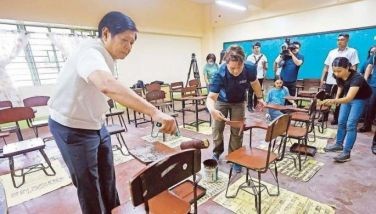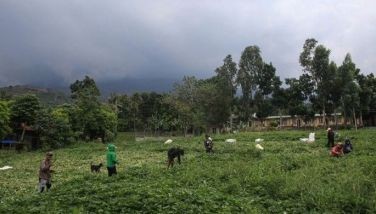‘Philippines more protected, but needs vigilance’

MANILA, Philippines — A member of the OCTA Research Group on Friday said the country is better prepared to address the possible entry of the Omicron variant of COVID-19, but stressed that vigilance is still needed to prevent a massive surge of new cases.
While there are still no cases of Omicron variant detected in the country, OCTA fellow Ranjit Rye did not discount the possibility of its entry by the first quarter of next year.
“There might be upticks (in new cases),” he said in an interview with “The Chiefs” over Cignal TV’s One News.
“But if vaccinations continue, if testing and tracing… continue and people stick to the minimum public health standards and protocols, we will be able to manage this surge better than the way we did as far as Delta and others in the past,” he added.
Rye also noted new treatment protocols that would help hospitals better address severe cases. He also reiterated their call for the government to stockpile antivirals and approve emergency use authorizations.
“The key here is, while it is a variant of concern, we should not panic. Number two, we should prepare,” he said.
“While we are celebrating Christmas, we should also be mindful of the fact that COVID is still here and that we should always be practicing minimum public health standards. Also, (we are) encouraging everyone to get boosters,” he added.
While a majority of Filipinos are willing to get vaccinated, Rye noted their latest survey showing 22 percent of the respondents do not want to get COVID-19 jabs.
“Although it’s still a minority, it’s something that we need to address because…majority of those who are unwilling to get vaccinated are doing so because they lack information, they lack awareness on the efficacy and safety of the vaccines,” he said.
“There’s still a lot of work to be done… We will reach that minority very soon who will not get themselves vaccinated for many reasons,” he added.
The OCTA survey, conducted in September, showed that vaccine hesitancy is higher among those identified in the lower socio-economic classes.
Some 29 percent of respondents belonging to class E and 22 percent of those in class D are not willing to get vaccinated, while only five percent of those in class ABC said they will not get vaccinated against COVID-19.
The survey also showed that vaccine hesitancy is highest among respondents in the Visayas at 32 percent, followed by 24 percent in Balance Luzon, 19 percent in Mindanao and five percent in Metro Manila.
Asked about their reason, 64 percent of those who said they are unwilling to get vaccinated cited the safety of COVID-19 jabs.
Another 14 percent said they are not sure if these are effective, while nine percent had pre-existing conditions, were pregnant or breastfeeding.
Others said a vaccine is not needed to fight COVID-19 (seven percent), while there are those who cited deaths (five percent), fear of injections (four percent) and not needing jabs as they do not leave their homes (three percent).
- Latest
- Trending

































